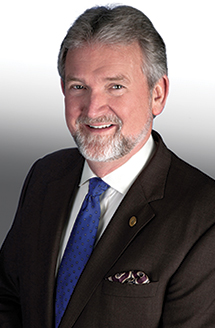
Dr. Herbek
Two members of the hospital team who had cared for him contracted the virus and recovered, as did the fourth patient who was first diagnosed in the U.S., a medical aid worker who had returned recently from Guinea. On Dec. 2, all contacts of all four patients had completed the 21-day monitoring period without incident. But by then, Ebola had become a prominent and persistent “news” story with a life of its own. A barrage of apparently conflicting information had turned many Americans’ ignorance about Ebola into full-tilt panic.
Biological threats and infectious diseases have been known to provoke outsized fear. We can remember well the panic around HIV and the children with hemophilia who were refused admittance to school. This time, governors closed borders, and at least one hospital employee’s neighbors suggested the employee could be a carrier. As the authors of a Dec. 22 JAMA “Viewpoint” note, panic can be highly destructive (doi:10.1001/jama.2014.17934)
Nancy E. Cornish, MD, a medical officer with the Centers for Disease Control and Prevention, reached out to the CAP for assistance in October in developing Ebola-specific advice for hospital laboratories. The CAP works closely with the CDC in several areas, most notably microbiology Surveys, including TB, virology, and mycology, which CDC staff review before we send challenges to subscribers. CDC expertise helps us to ensure that our proficiency testing materials represent what is in the population at the time and enables us to guarantee that our Surveys are current, relevant, and safe.
CAP Council on Scientific Affairs chair Bruce Williams, MD, invited the 20-plus subject-matter experts who chair CSA committees to participate in a conference call to address Dr. Cornish’s request for input. He asked Gary W. Procop, MD, a professor of pathology and director of the molecular microbiology, parasitology, and mycology laboratories at the Cleveland Clinic Lerner College of Medicine, to serve as CAP subject-matter lead. To prepare the group, CAP staff culled and circulated what was then on the CDC website (www.cdc.gov/vhf/ebola/index.html) about managing specimens from patients who meet the case definition criteria for possible EVD.
On the conference call, Dr. Cornish, who is in the CDC Center for Surveillance, Epidemiology and Laboratory Services, sought feedback on CDC information for laboratory professionals, pressing for scrutiny that would identify anything that was missing or unclear. Afterward, Dr. Procop created a summary document that was provided to Dr. Cornish for review and ultimately posted on the CAP website (www.cap.org/web/submenu/news/ebola-update).
If any good is to come of the tragedy in West Africa, it will begin with documents like these. As Dr. Procop puts it, our challenge here is vigilance. Everyone has a duty to prepare for what we can anticipate because there is much that we cannot. Laboratory professionals can help to institutionalize an attitude of persistent awareness. When health care personnel model scrupulous attention to hand-washing, for example, they send a message.
One pathologist who can address this with authority is Steven H. Hinrichs, MD, Stokes-Shackelford professor and chair of the Department of Pathology and Microbiology at the University of Nebraska Medical Center. Dr. Hinrichs’ research interests include bioterrorism and naturally occurring biological threats, which may explain how he came to be the founding director of the Nebraska Public Health Laboratory in 1997. After 9/11, when the federal government made funds available to the states to develop disaster preparedness plans, he was a leader in persuading the state of Nebraska to apply for monies to repurpose unused space to build a biocontainment unit. This is how the University of Nebraska Medical Center in Omaha came to develop one of the largest, and one of only four, biocontainment units in the United States.
Teams at the University of Nebraska Medical Center and Emory University Hospital in Atlanta have published accounts of their work with EVD patients. Two articles in Laboratory Medicine (Hill CE, et al. 2014 Summer; 45:e109–e111; Iwen PC, et al. 2014 Fall; 45:e146–151) and an editorial in the American Journal of Clinical Pathology (2015;143:4–5) demonstrate that even a challenge as significant as Ebola can be addressed effectively with proper planning, but the time for a fire drill is not when there’s a fire.
Pathologists can be leaders in making disaster readiness routine. We can model optimal approaches across our institutions. We can sit down with our laboratory teams to identify what needs to be done and by whom. We can write a plan, obtain essential resources, and schedule practice sessions.
I have been frustrated by speculative media coverage that feeds hysteria and can only discourage essential transparency. Biological threats and infectious diseases are not new and they are not going away. Every professional, here and abroad, who cares for such patients despite personal risk should be held in the highest regard.
The CDC continues to do a superb job under difficult circumstances. Researchers at the CDC have worked with Ebola for 38 years and no one handling Ebola (or anthrax) specimens from the CDC has become infected. We know that every human endeavor is subject to human error, but we also know that when mistakes do occur, rigorous root-cause analysis will enable continuous quality improvement. As in so many situations, carefully presented evidence will overcome fear.
The Ebola crisis is a public health wake-up call. I have a parting thought on that topic, courtesy of Dr. Hinrichs. There is no time like the present to strengthen ties to your state public health laboratory. Because while we may not know when, we know that we will need them.
[hr]Dr. Herbek welcomes communication from CAP members. Write to him at president@cap.org.
![]()
 CAP TODAY Pathology/Laboratory Medicine/Laboratory Management
CAP TODAY Pathology/Laboratory Medicine/Laboratory Management
